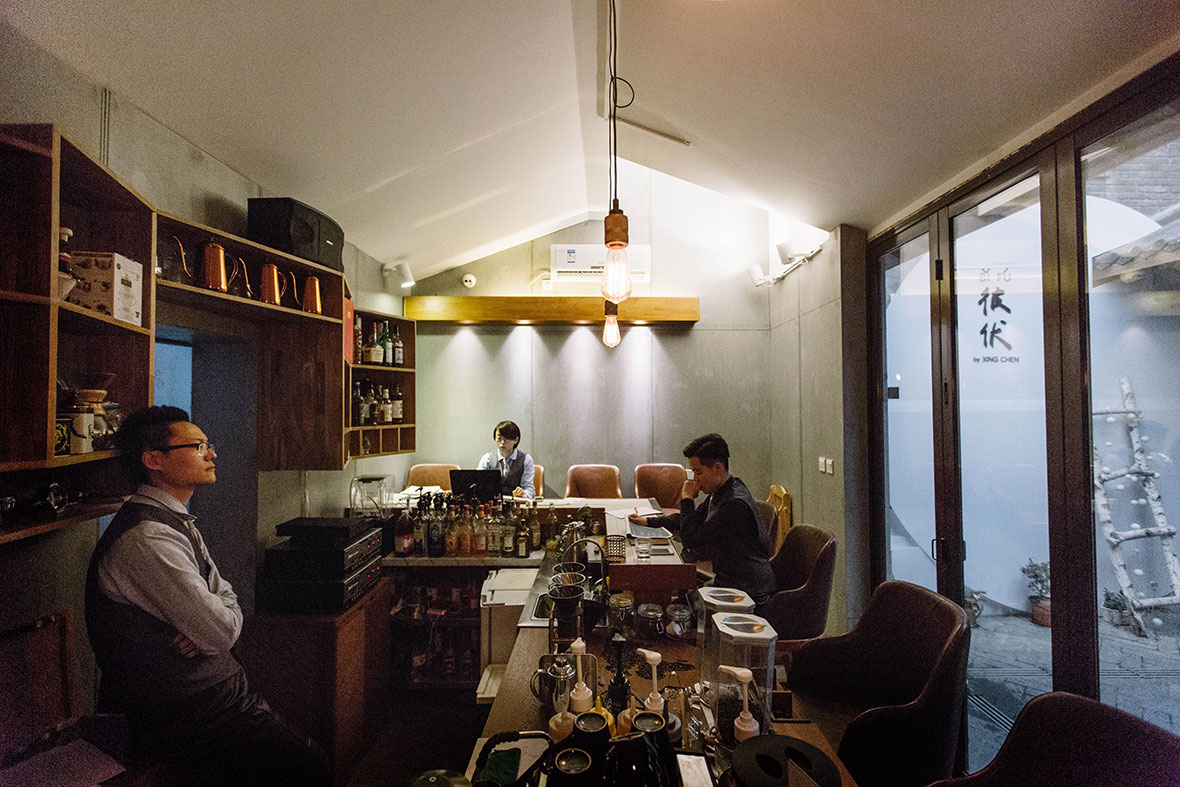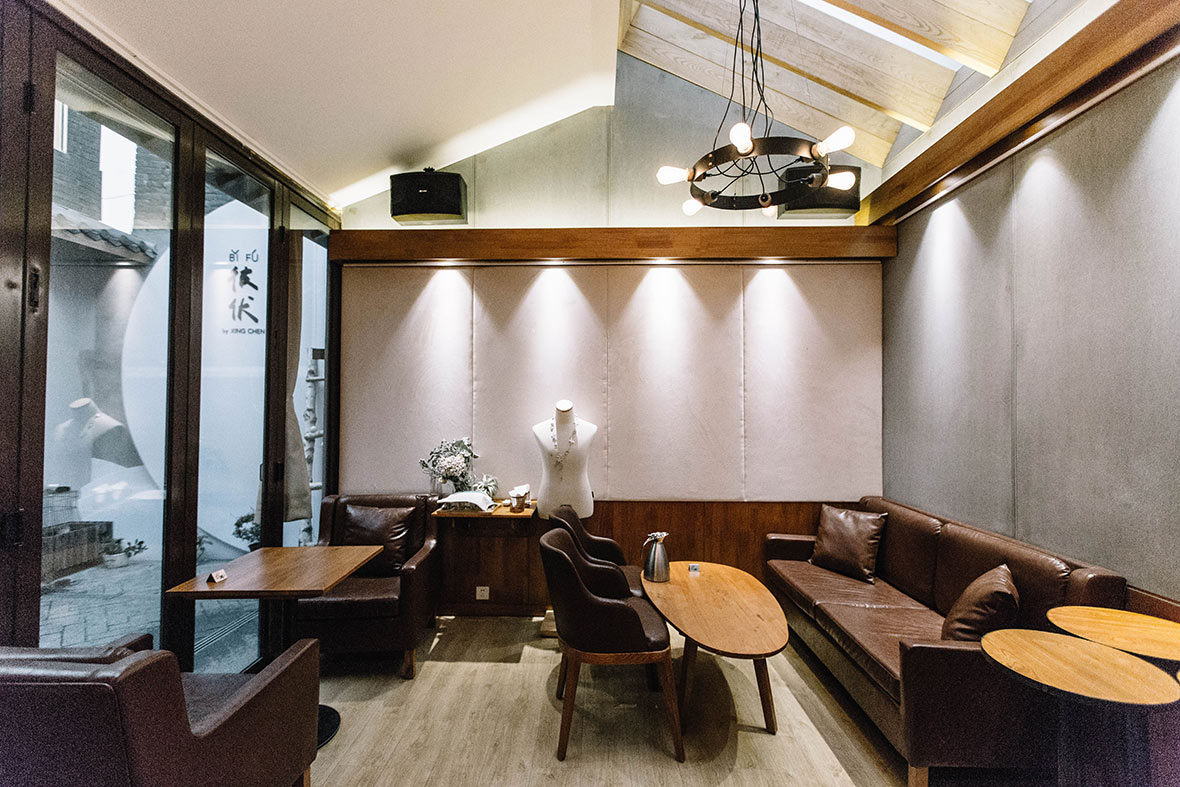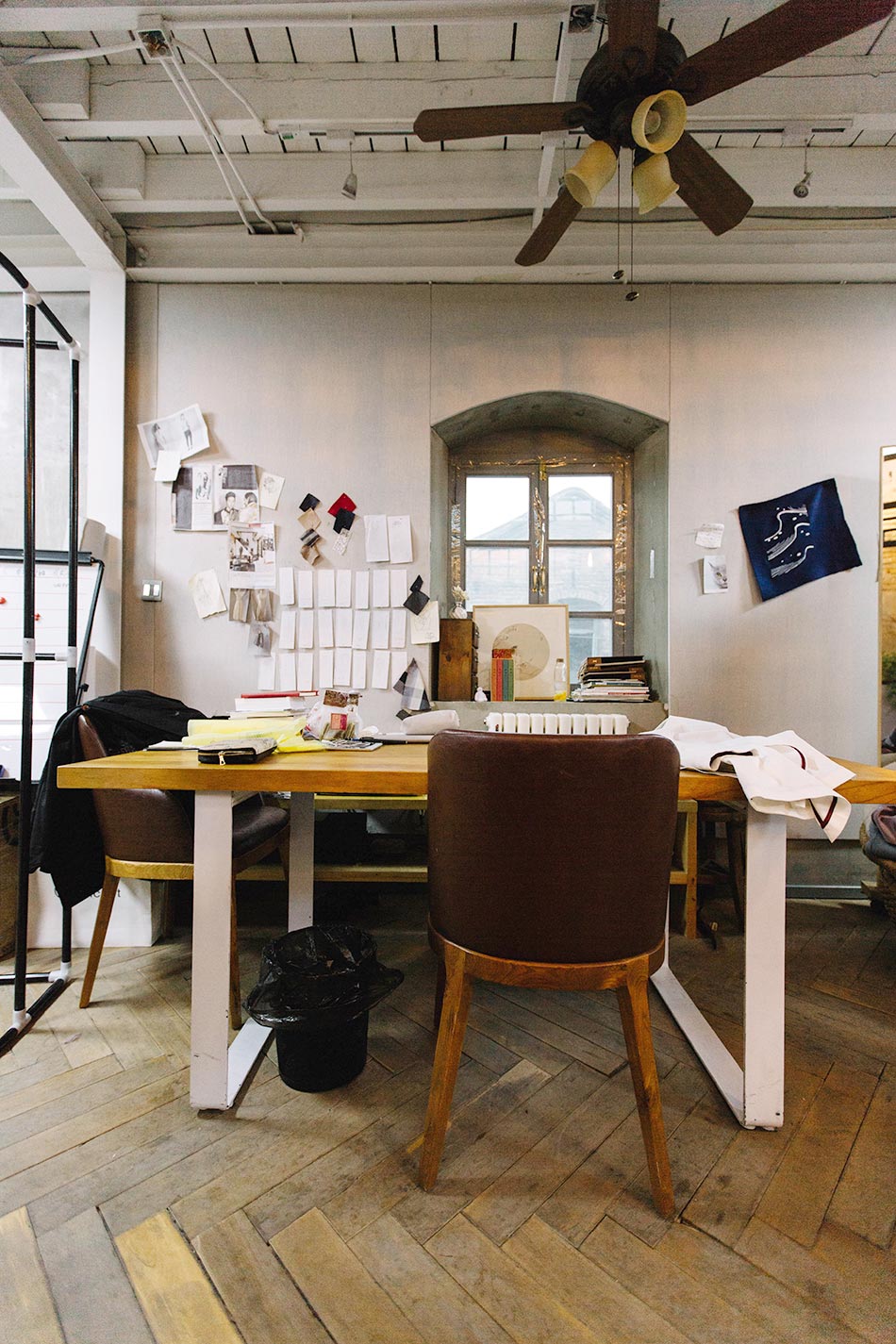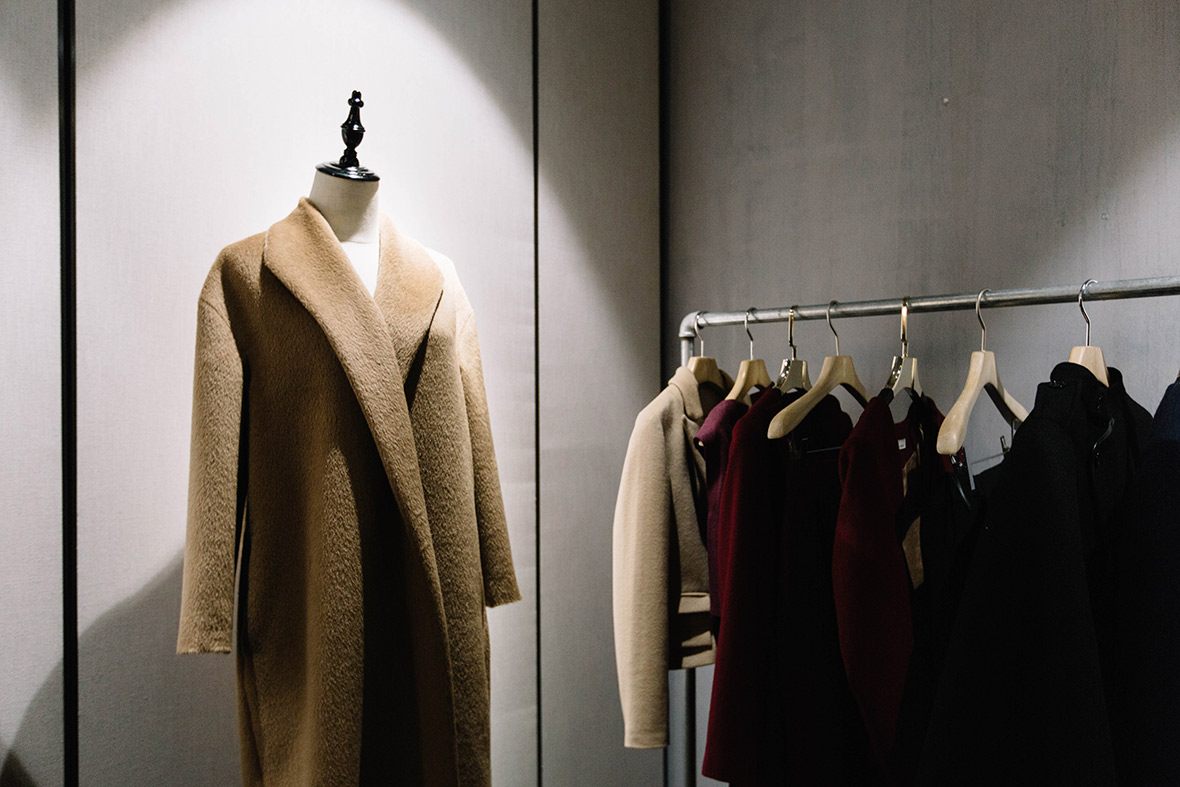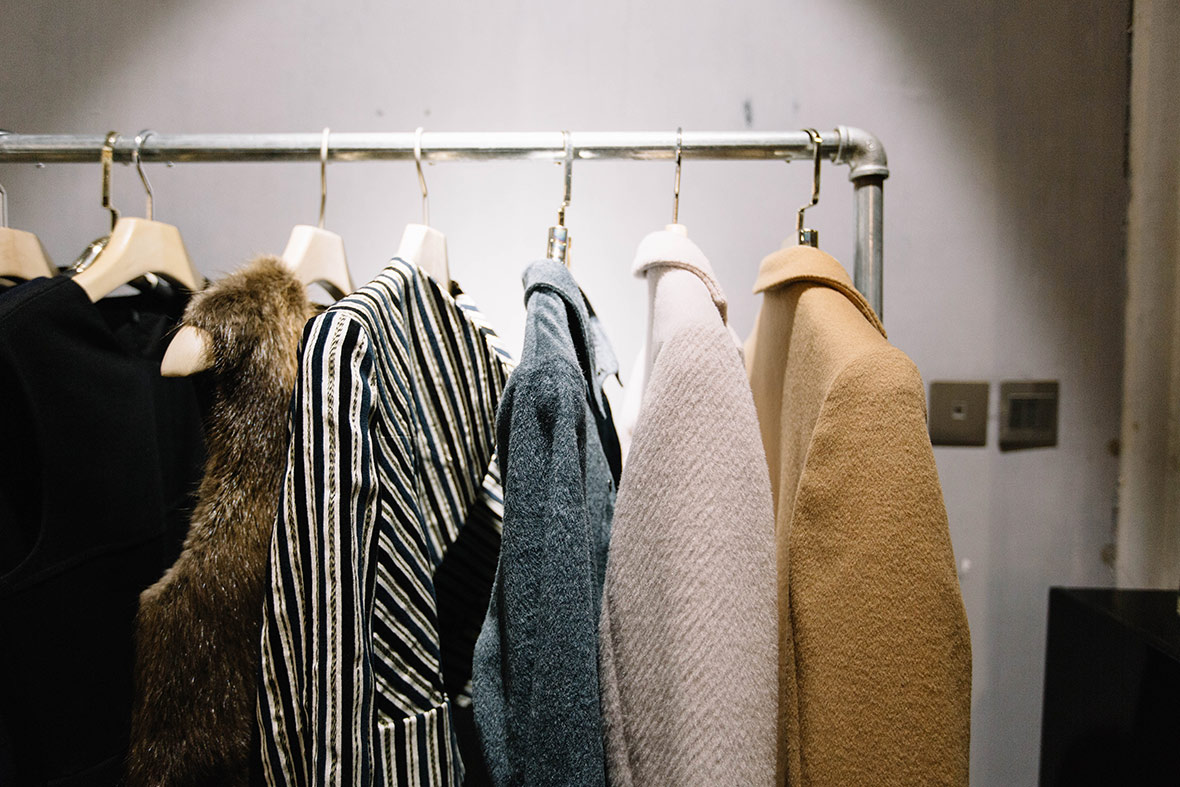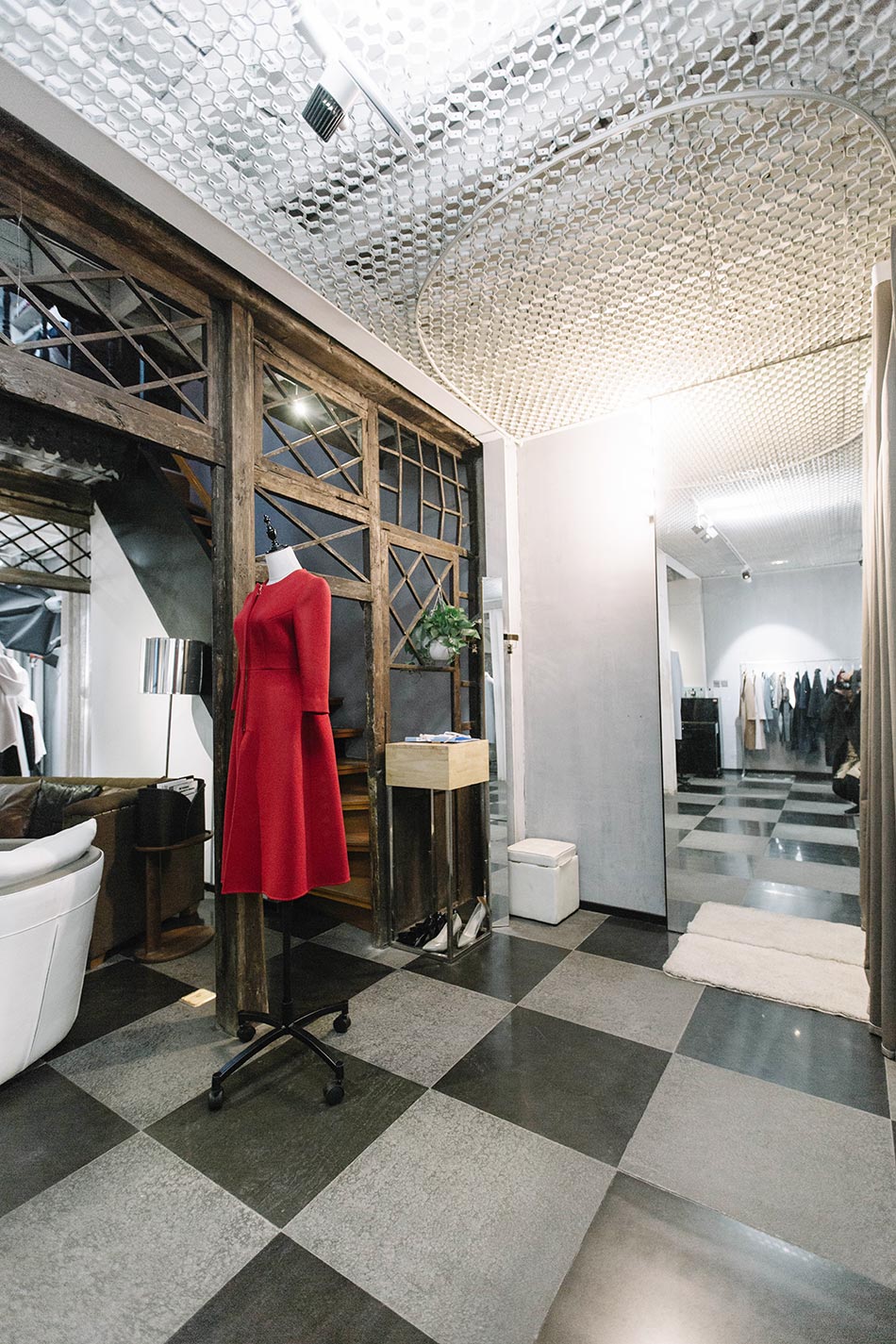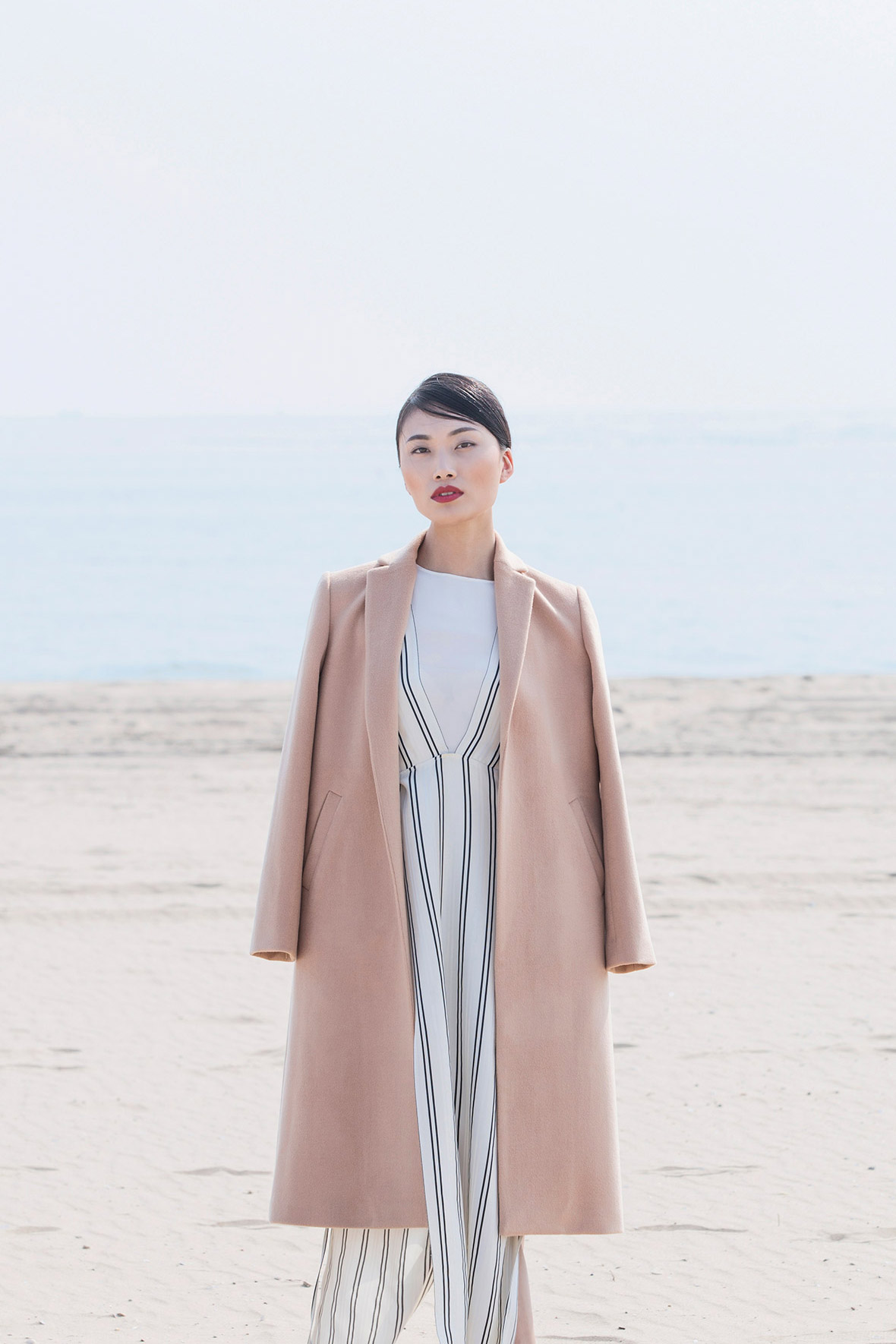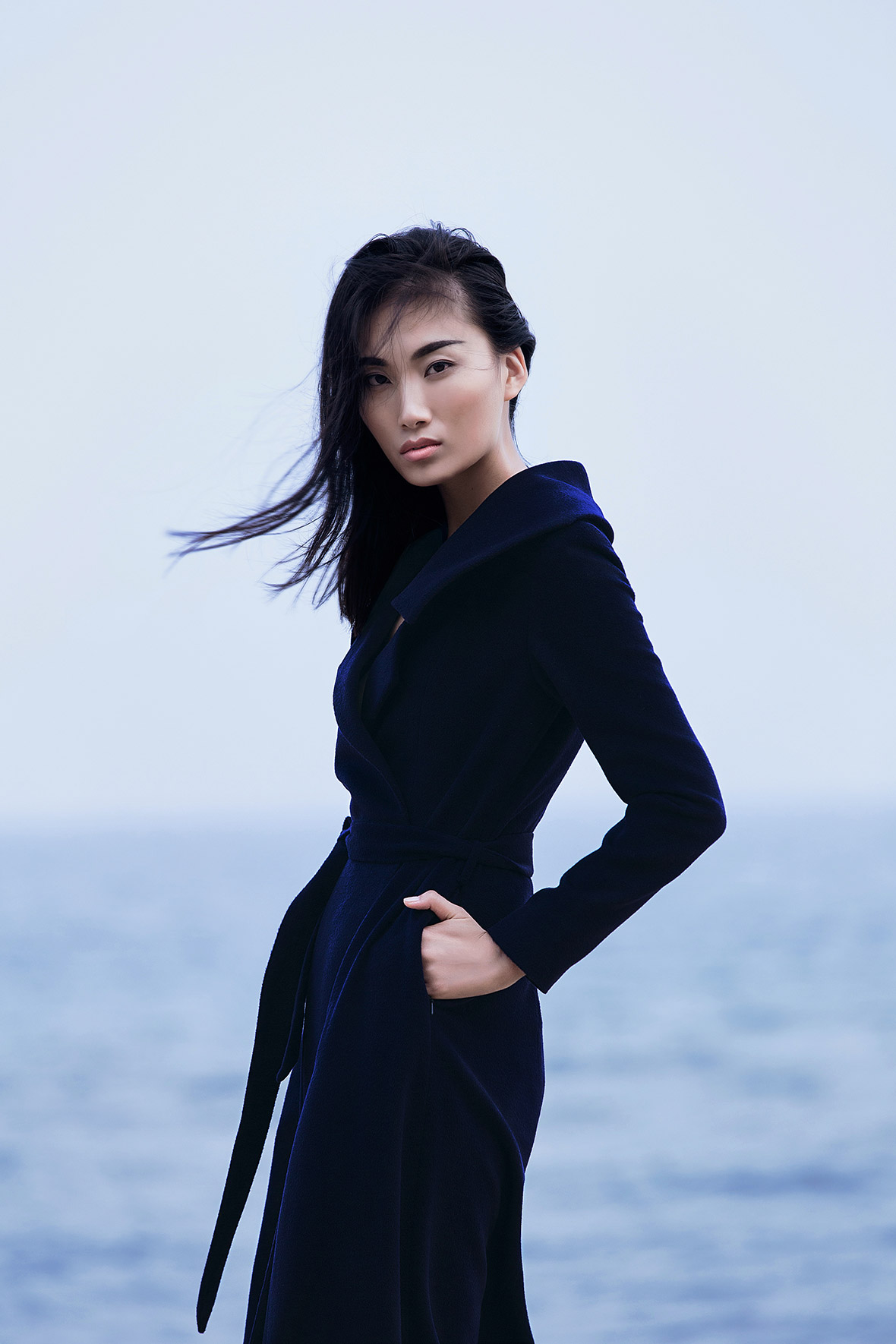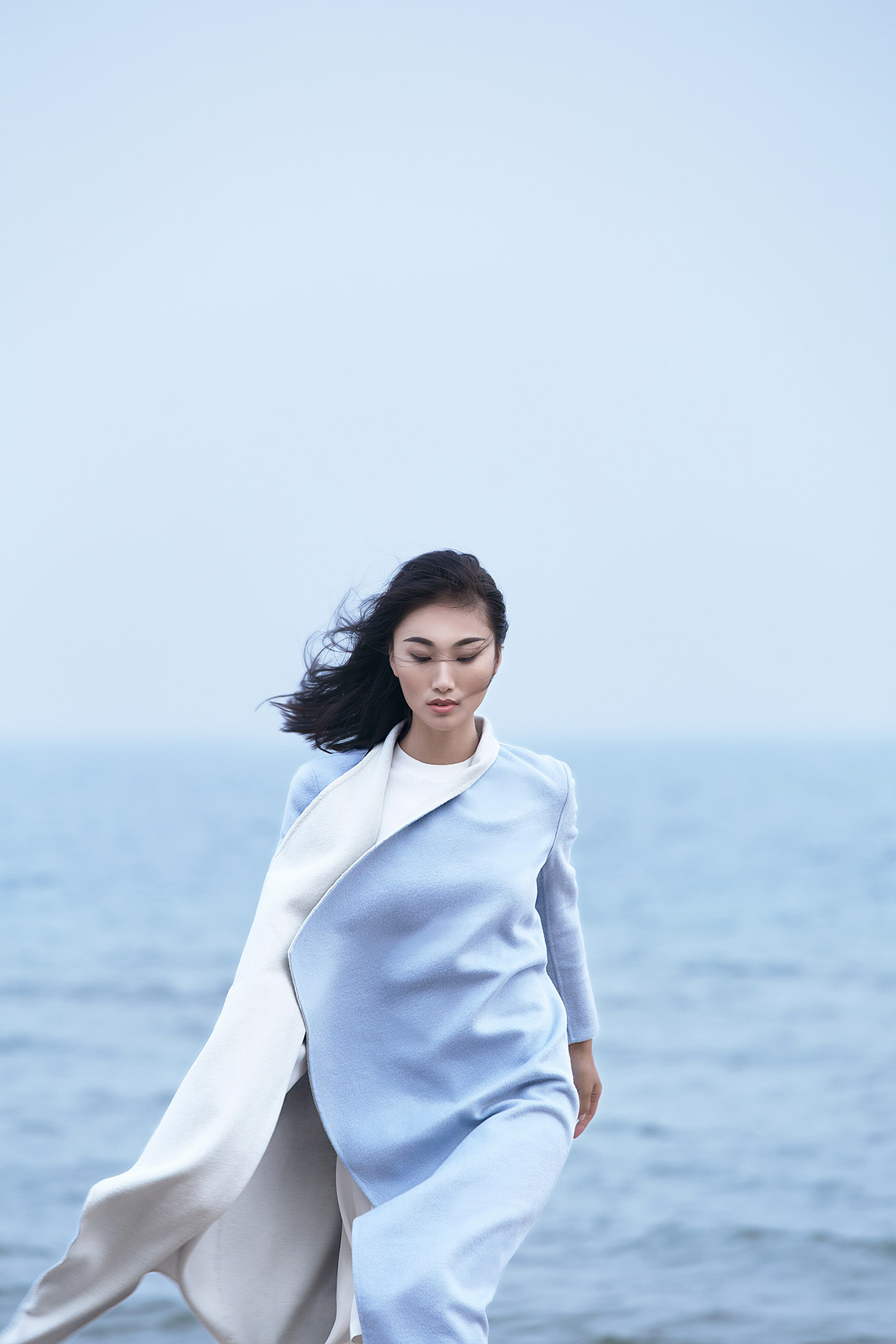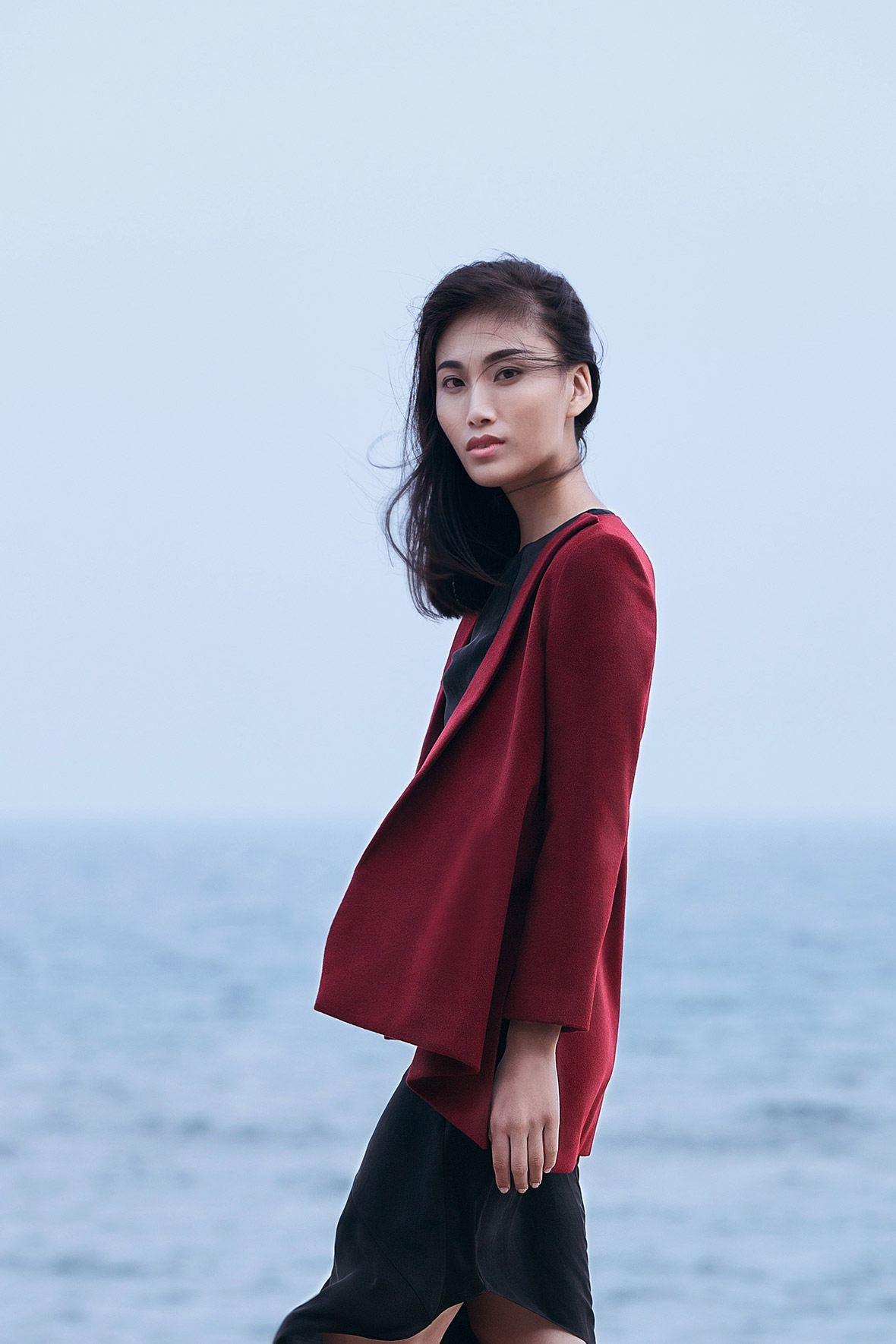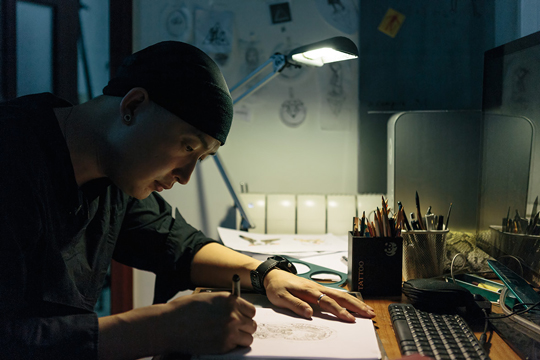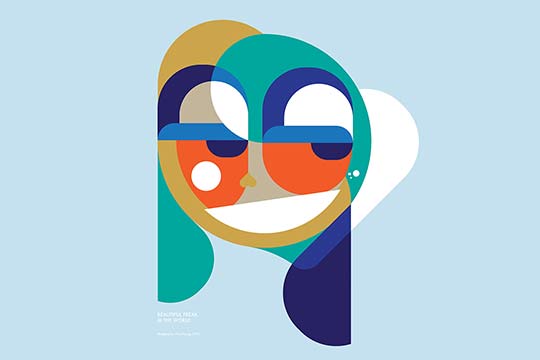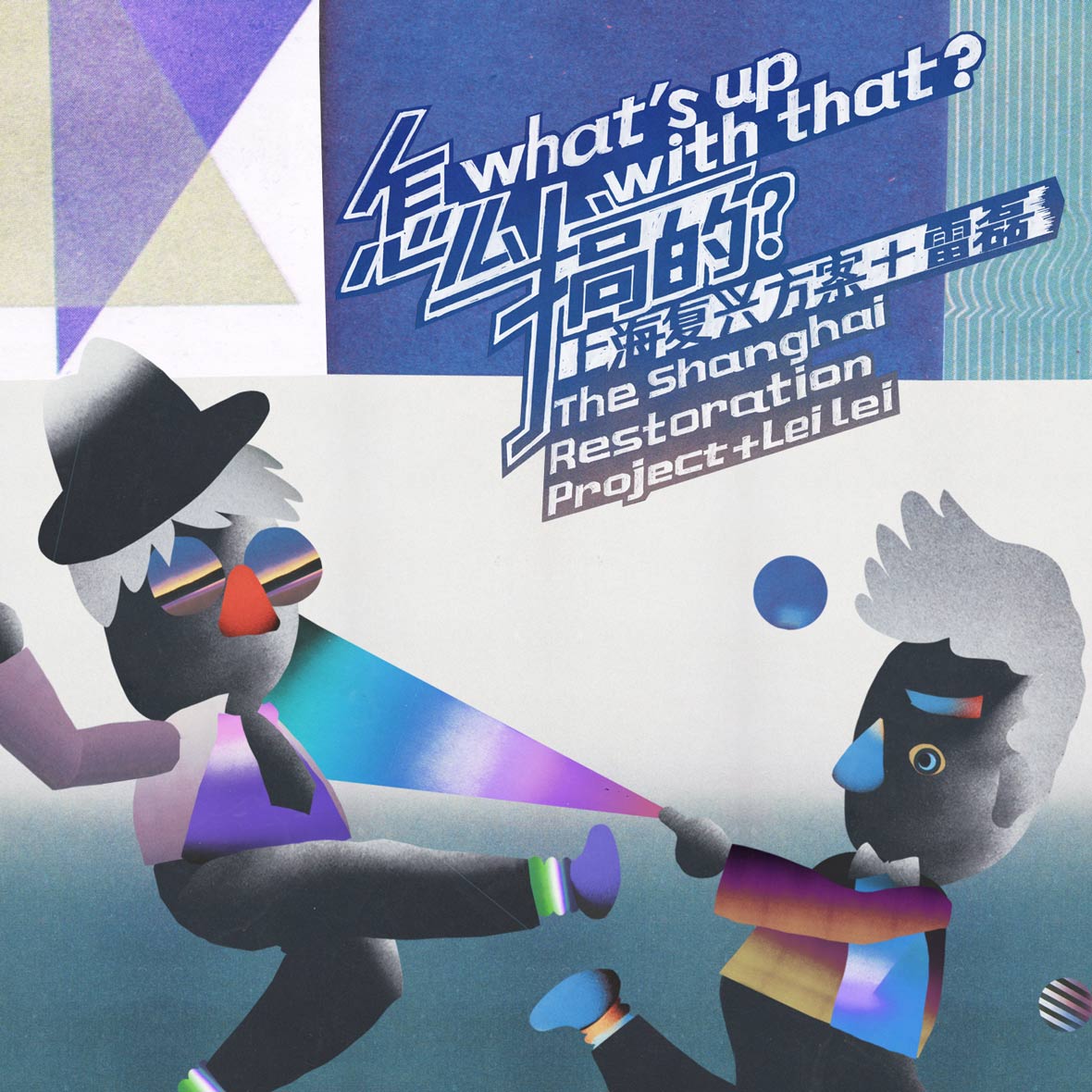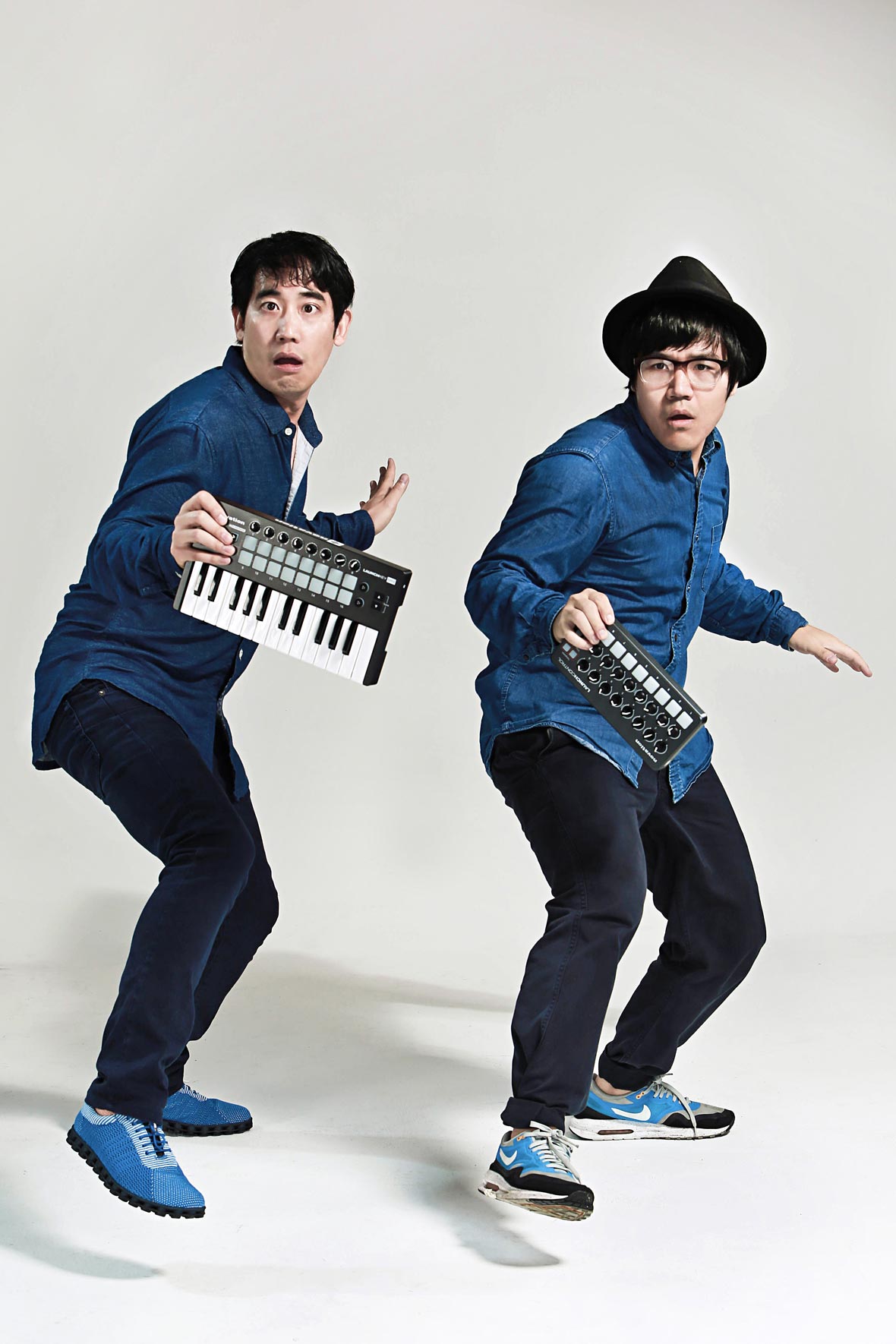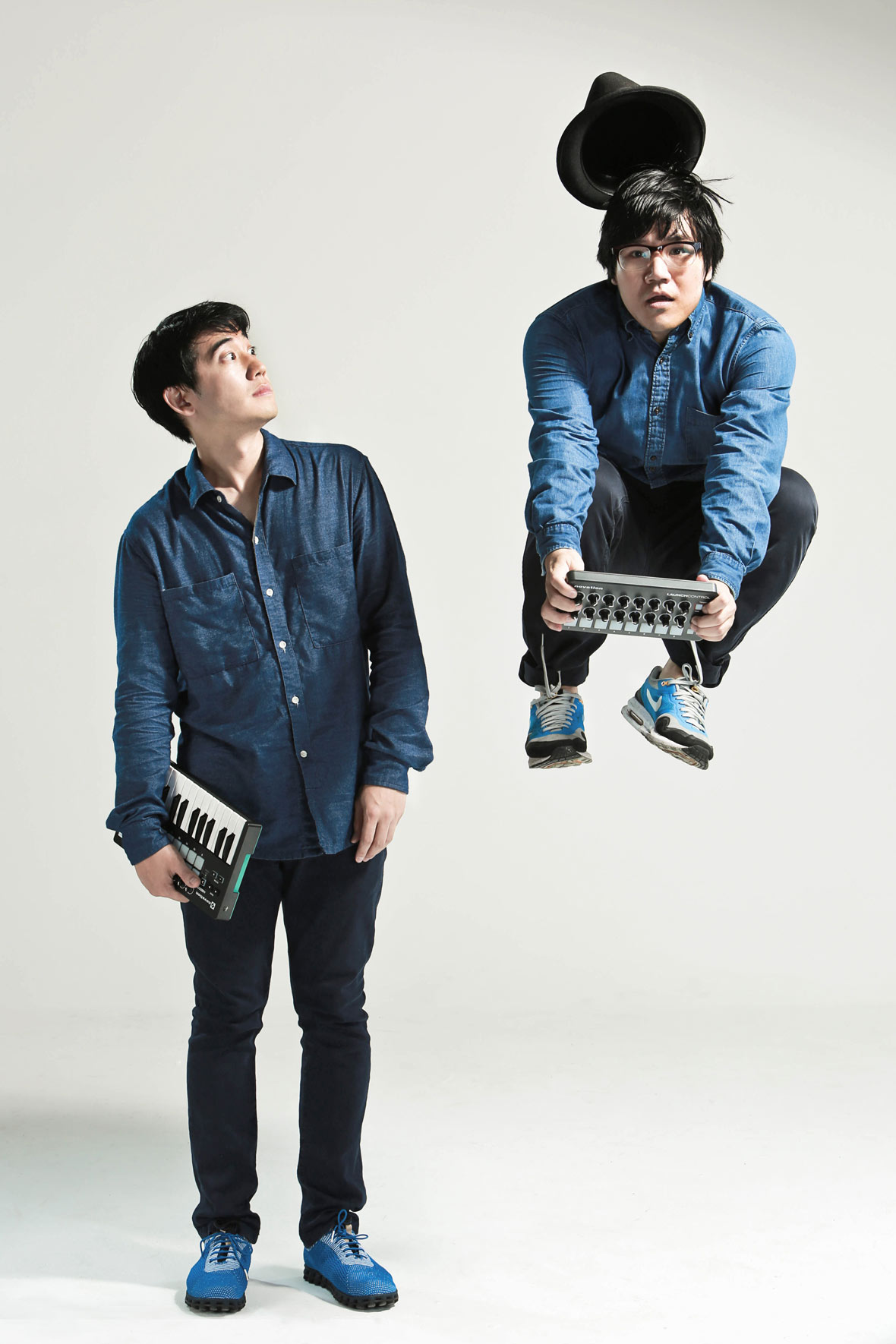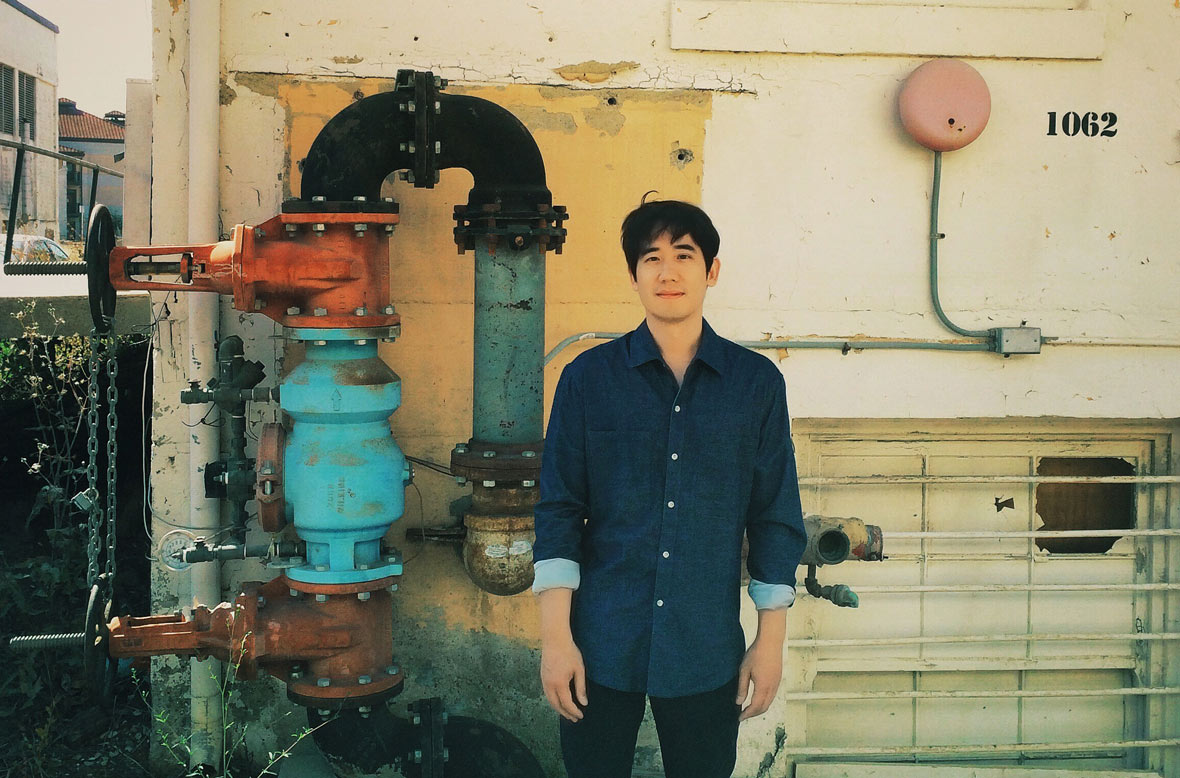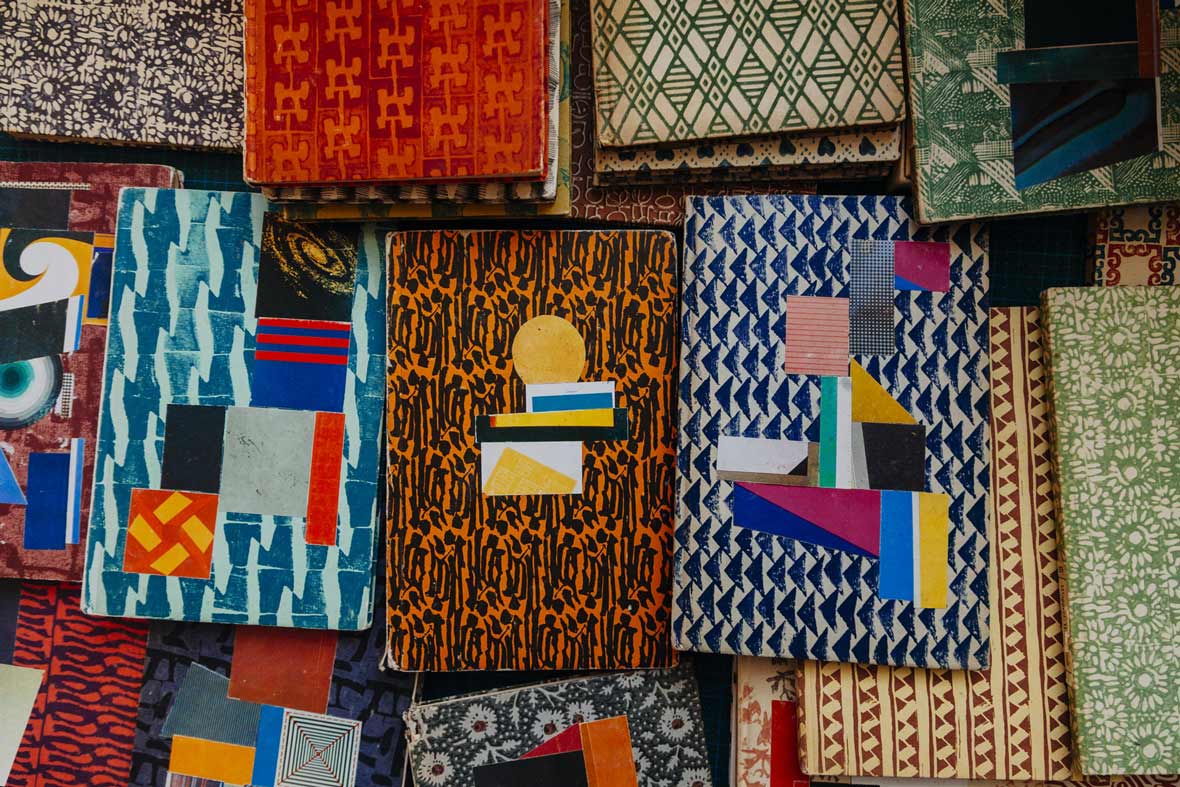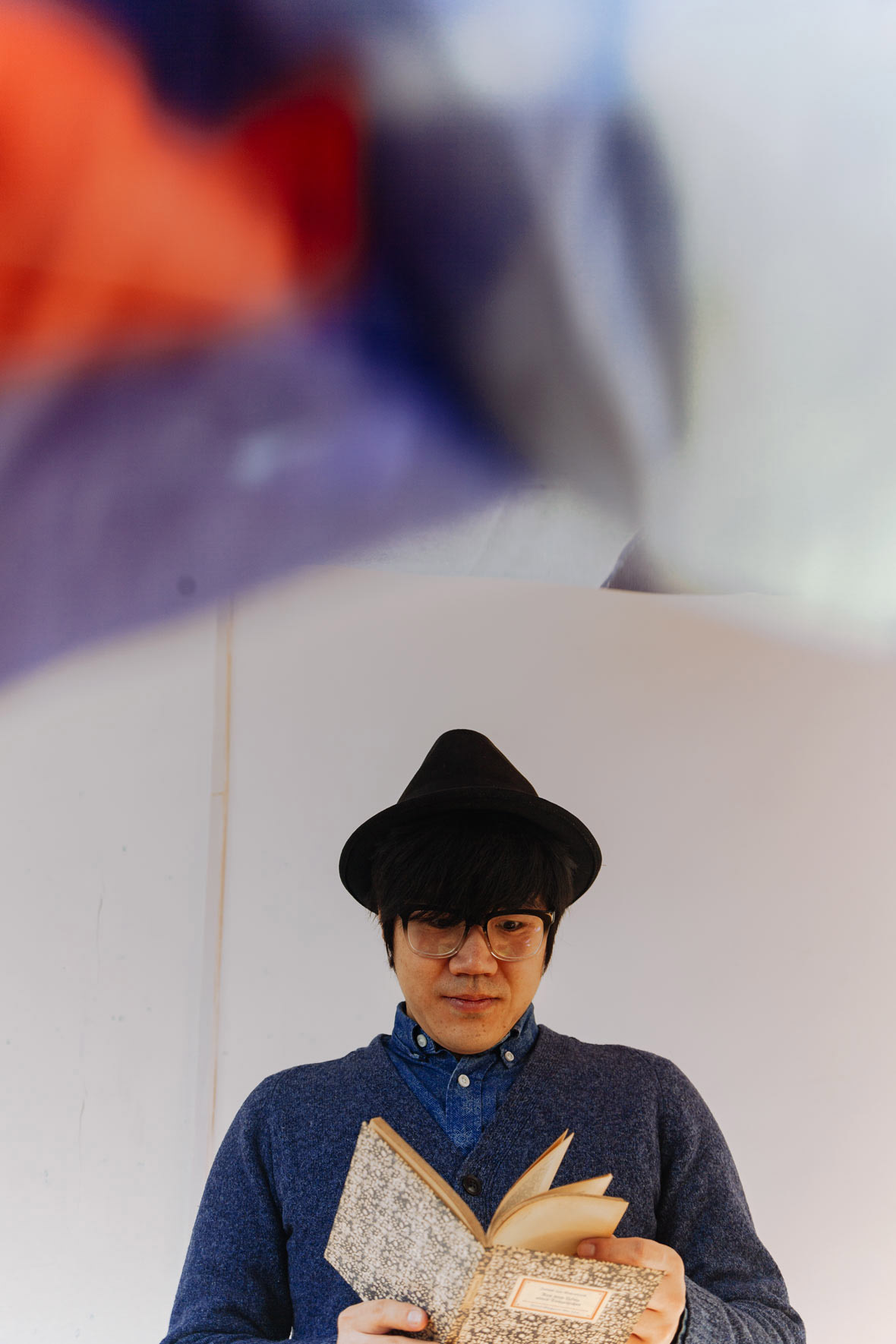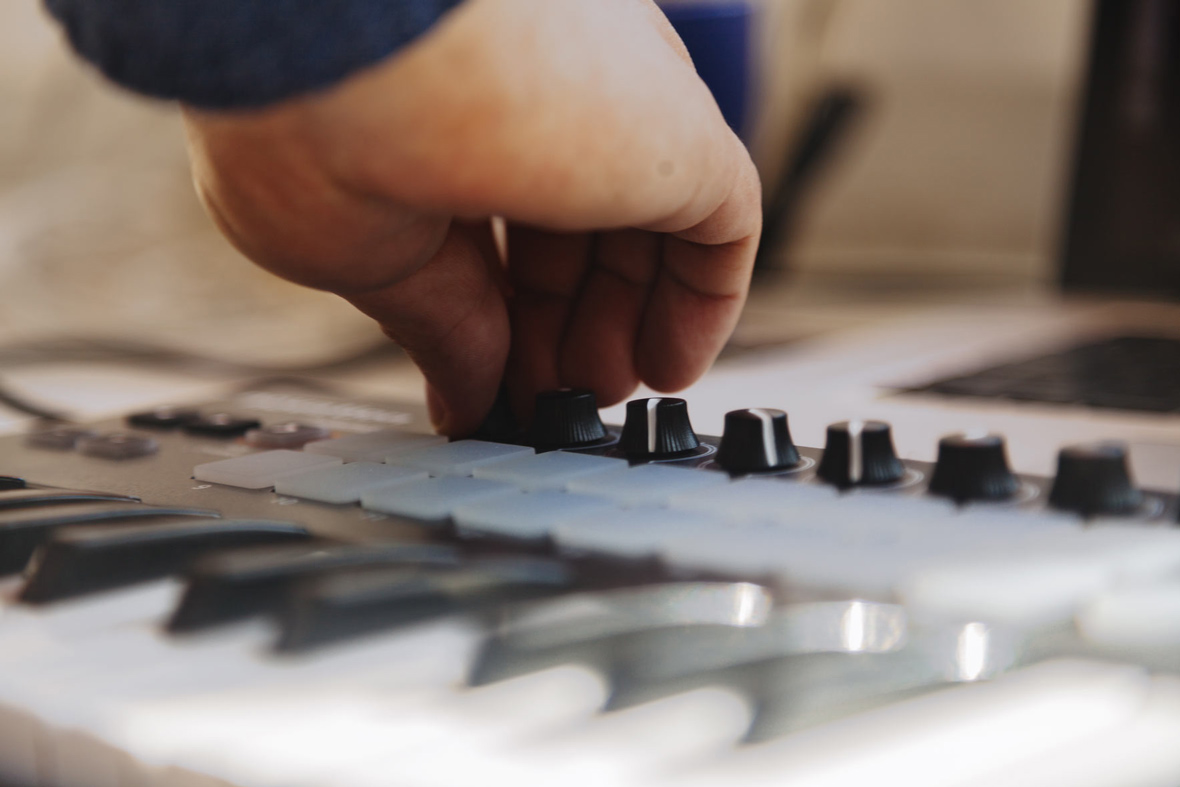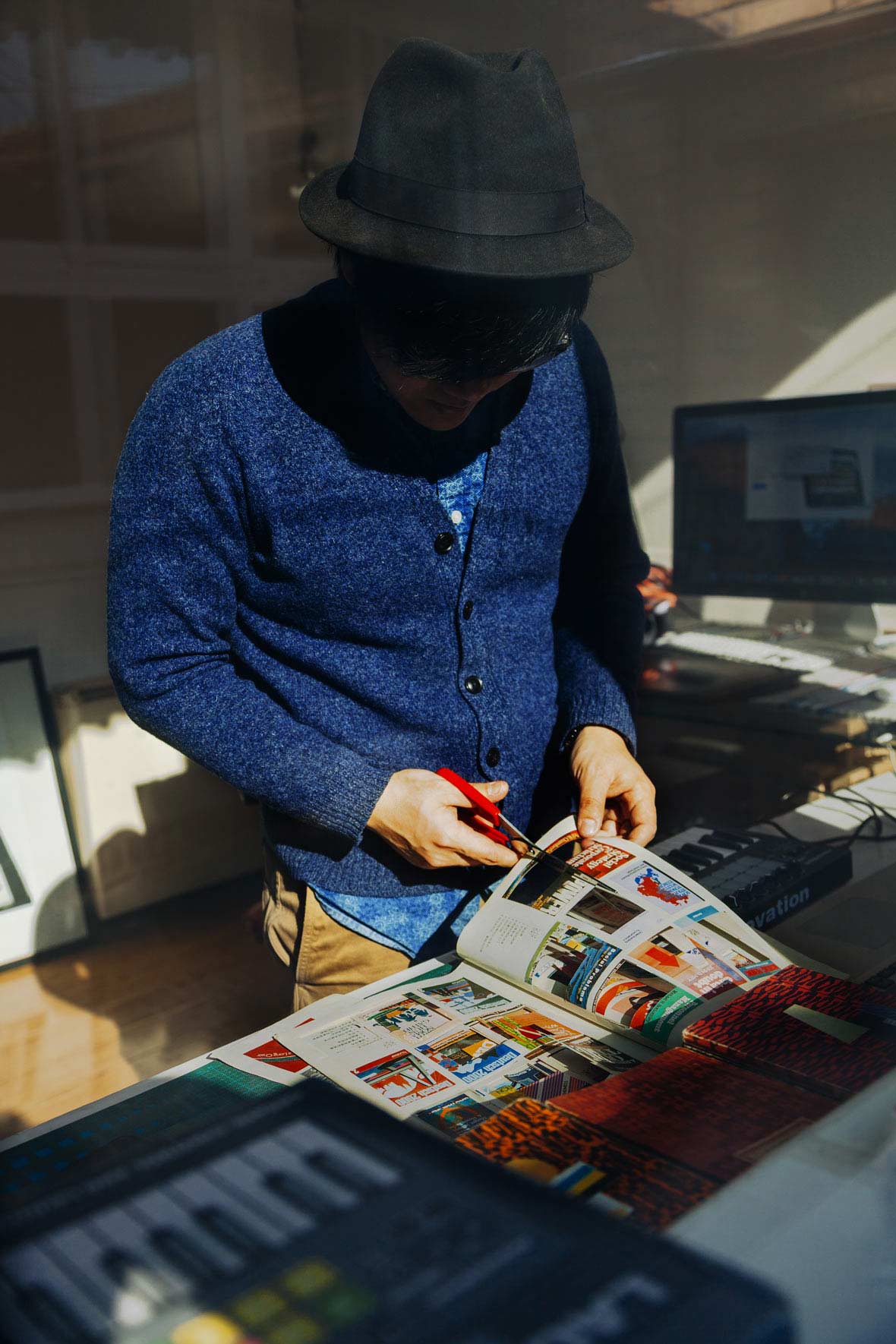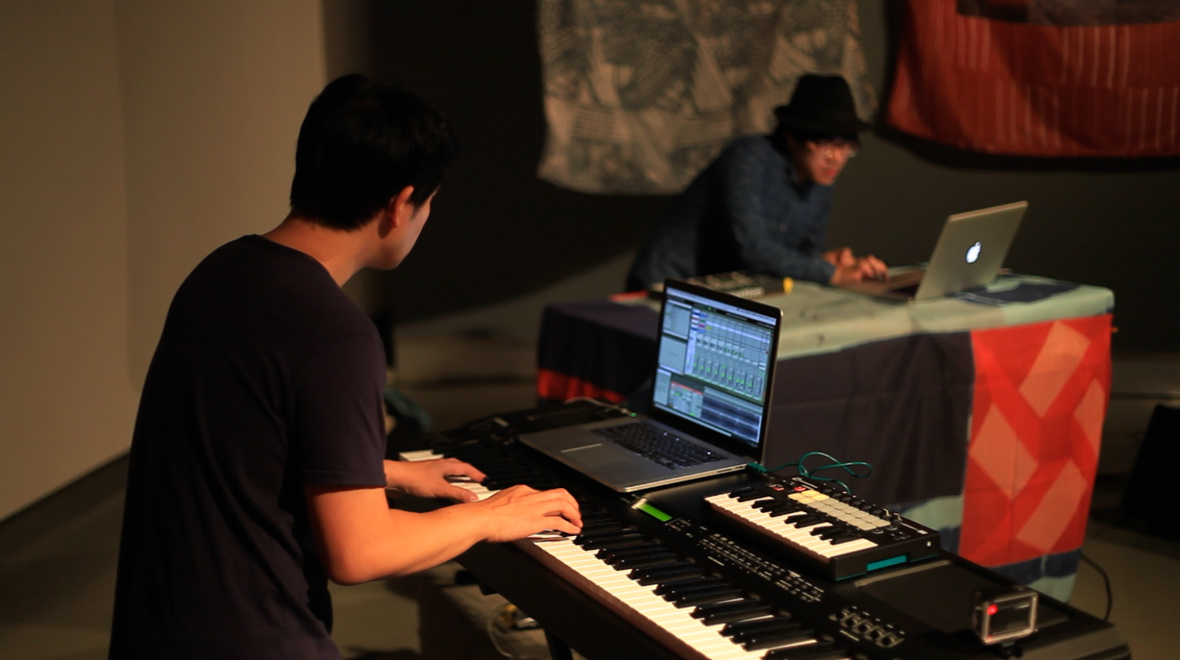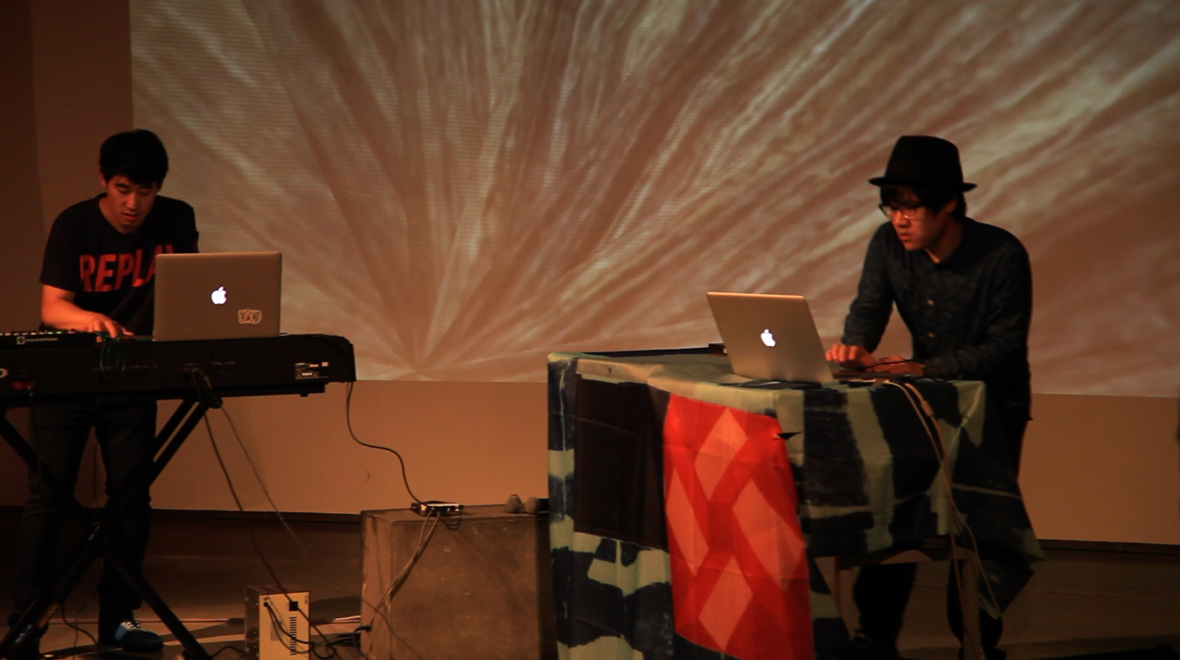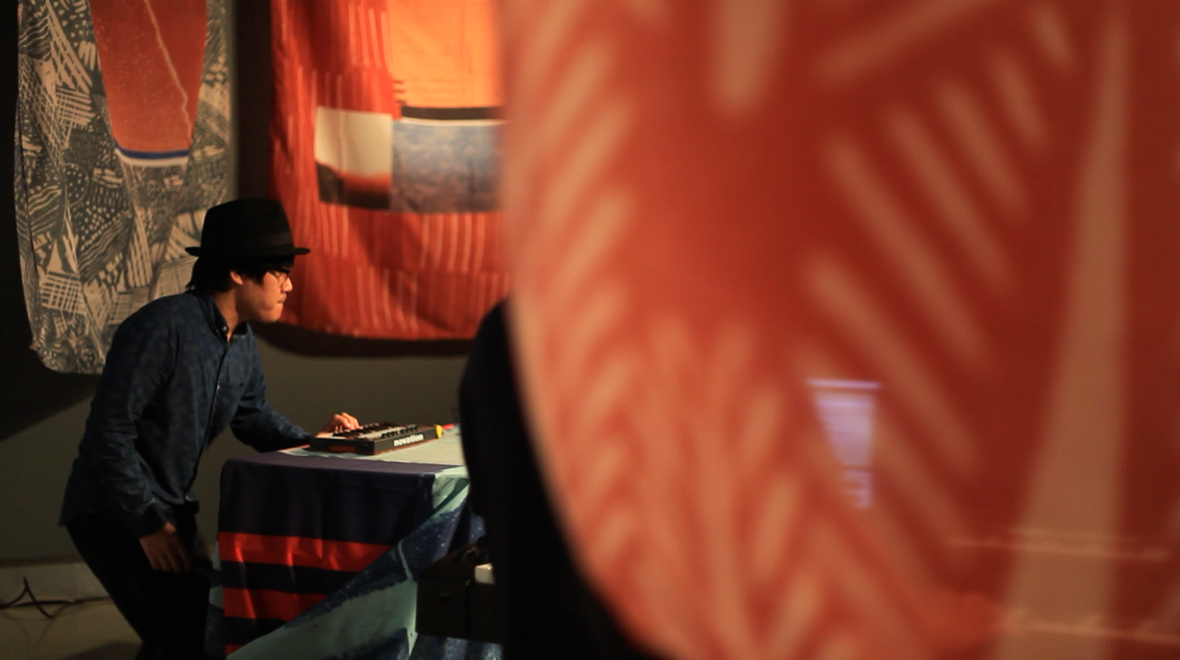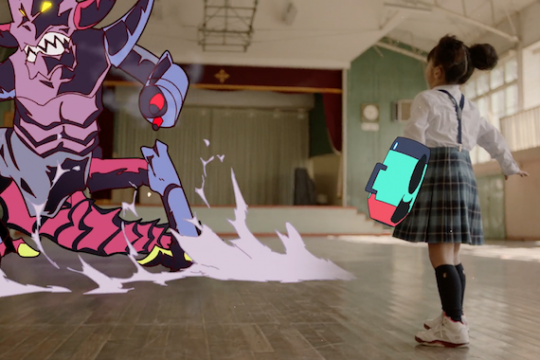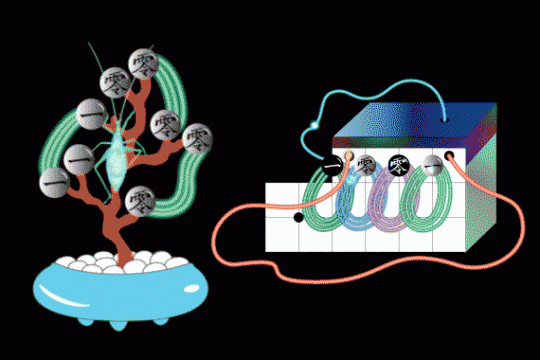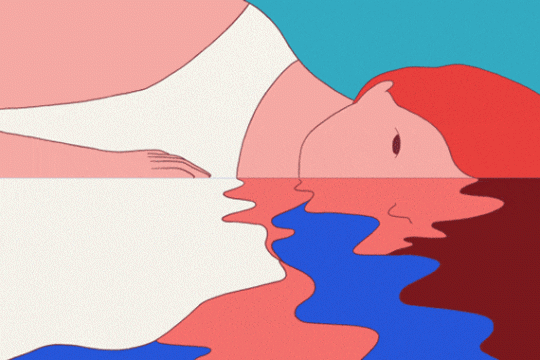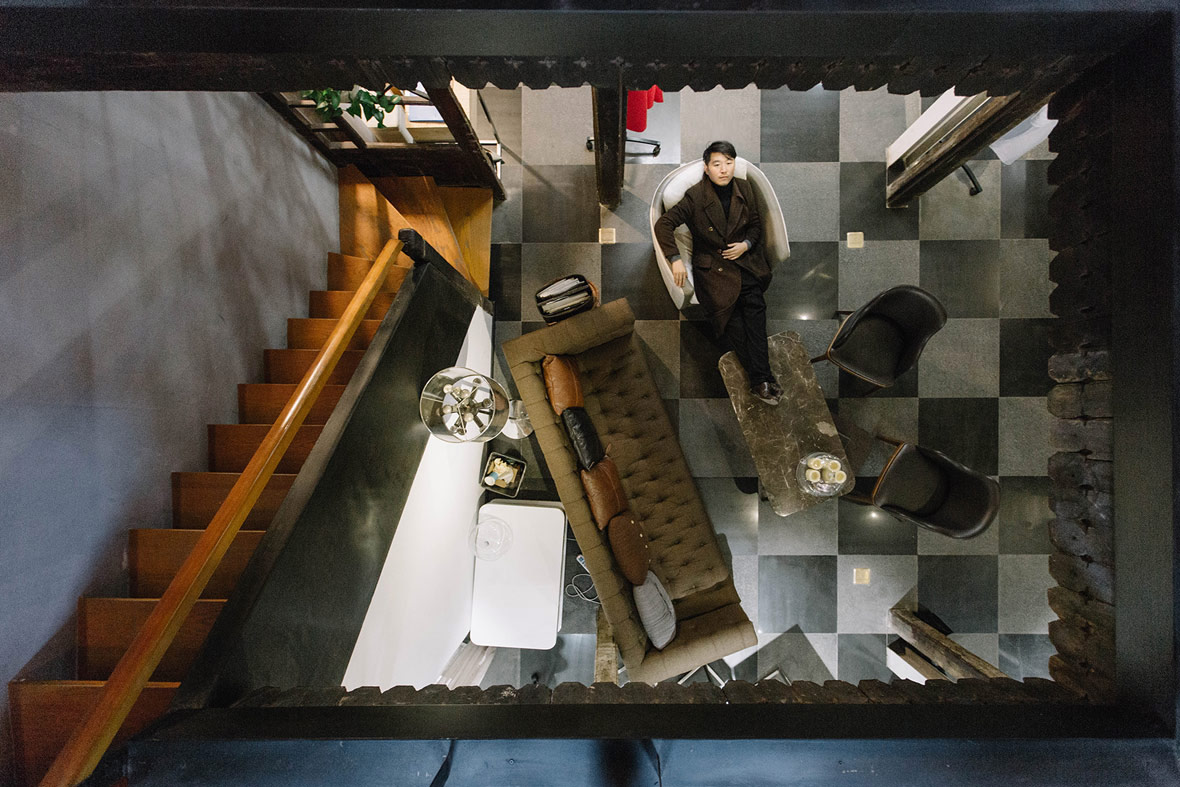
Located in Beijing’s Qianmen, BI FU Kongjian is a small shop that sits quietly along Zhujiajiao hutong. Chen Xing, an architect and fashion designer, is the mind behind this project. With his background in architecture, he transformed what used to be an old brothel into a contemporary clothing boutique that is home to a collection of his personally designed apparel. Upon entering through a small door, visitors will find themselves in a narrow passageway, and advancing further they will find themselves in an open-air courtyard. The courtyard is divided in half by two spaces that are used as a café and bar; hinged French doors are used to separate these indoor areas from the outdoor. The glass doors can be opened up completely to combine the three areas into one large space. Going farther down the courtyard is a door that leads into the BI FU studio; the first floor is utilized as a showroom for their clothing, while the second floor is used a private workspace.
彼伏空间,坐落于北京前门朱家角胡同,由旧时青楼改造而成,是陈兴作为建筑师的一个传统老建筑改造项目,同时也是他作为服装设计师而成立的个人品牌“彼伏”的所在地。从胡同边上7号的小门推进去,过了狭道,便可见一个露天中庭。中庭两侧是咖啡馆兼酒吧,均有面向中庭与墙同宽的折叠推拉玻璃门。一旦侧推开门,三个被划分开的空间便融为一体。穿过中庭,即是彼伏的工作室了。其一层为展示空间,二层为制作及设计工作间。
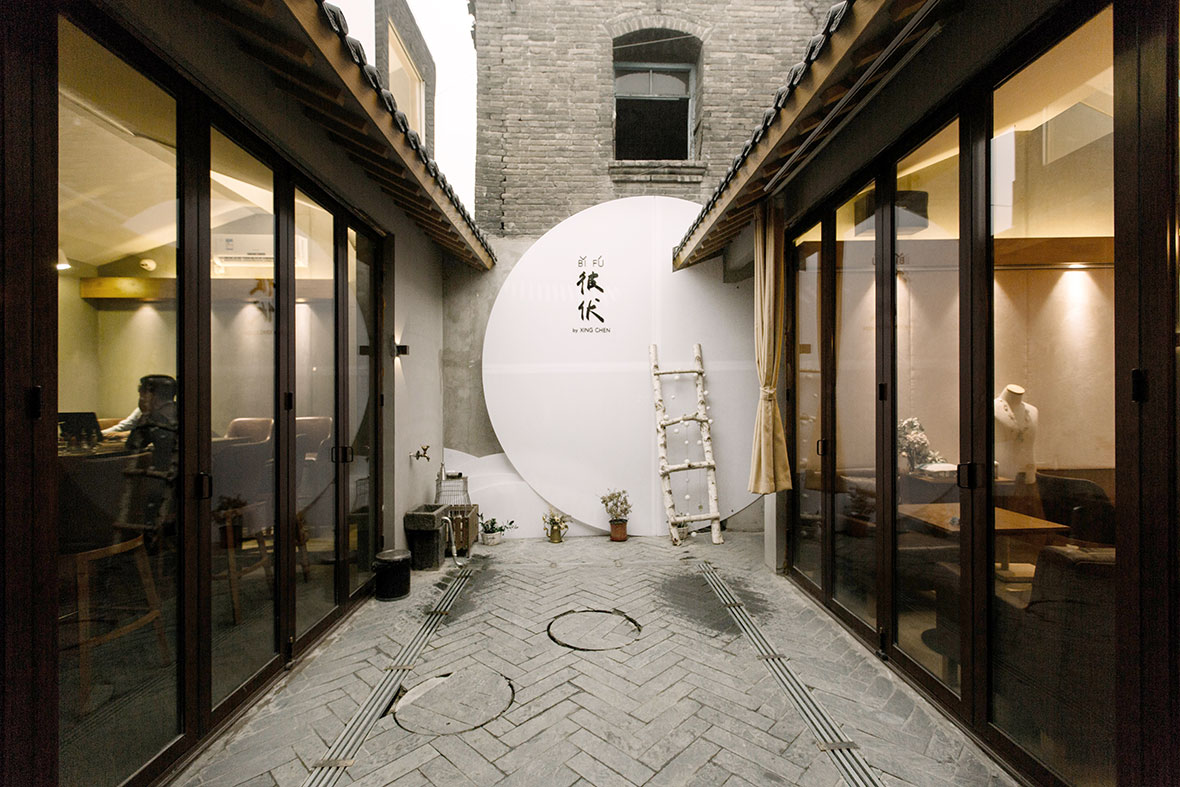
The way BI FU is designed makes it quite different from a traditional siheyuan, and it’s also unlike the traditional architecture of Chinese palaces. Chen Xing chose this particular building to renovate mainly because of the courtyard space and he was intrigued by the ways the original architects built with wood. After all his personal touches were applied, he carefully returned the original wooden structures to their place. He wanted a contemporary design but still sought to preserve the history of the old building. Born in Xi’an, Chen Xing graduated from the Tsinghua University in Beijing and later the Polytechnic University of Milan in Italy with a degree in architecture. He understands the importance of culture and heritage, and strongly believes that the old and the new should exist and grow alongside one another. Being an avid supporter of independent designers, and having an interest in the role of culture in brands and design, it seemed only natural for him to shift his focus towards fashion design.
这个空间结构既不像四合院传统民用建筑,也不似故宫传统皇家建筑,其中庭和繁多的木结构又给它平添一丝趣味,这正是陈兴选择并改造它的原因。他将原建筑中的木结构小心翼翼置回原处,让历史痕迹在现代设计中仍踞有一席之地。这位来自中国古都西安、从北京清华大学和意大利米兰理工大学毕业的建筑师,他信奉文化的传承,信奉新与旧应该有机生长在一起。因为更倾向于自主创作以及对“品牌、文化、设计”的热衷,他转而投入到服装设计。

Chen Xing’s obsession with architecture and culture, along with his love of design, culminated into his BI FU clothing brand. He prefers minimal and simpler designs that also contain dramatic details. His goal was to create something exciting and refreshing amidst the cultural renaissance happening in China. The specific type of design, whether it’s architecture or fashion, isn’t important to him except when it comes to the technical requirements. He firmly believes that the artist’s personal interpretation on the finished design as well as their understanding of culture are the cornerstones of every piece of work. We recently had the chance to discuss fashion and architecture with this multitalented designer.
陈兴对建筑和文化的痴迷带进他的个人品牌“彼伏”。他的设计简洁利落,细节中充满戏剧,在今天中国创意界的文化觉醒中一枝独秀。对于他来说,具体的技术性要求外,做哪一类设计并不重要,作品只是作为最末端的一个存在,个人对设计的解读、对文化的理解才是最为源头的关键。以下采访兴许可以让我们对这位跨界设计师有更深的了解。
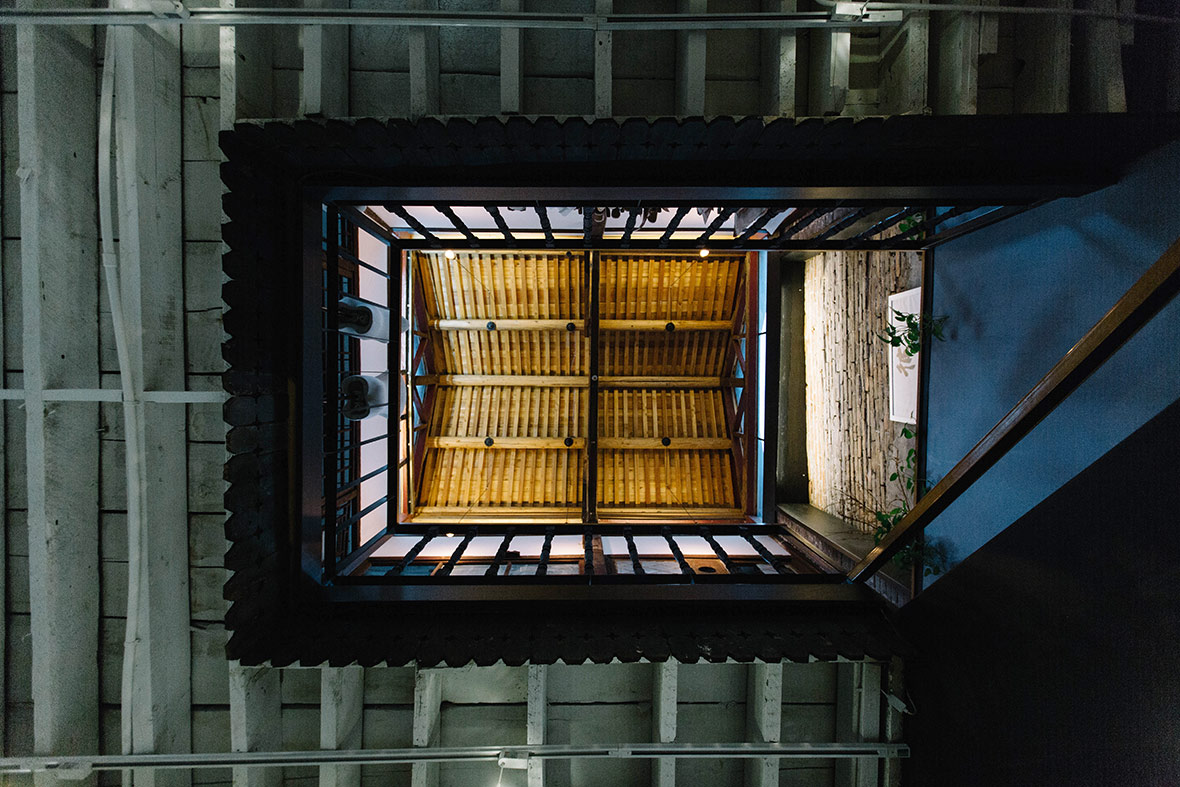
Neocha: In your opinion, what do fashion design and architecture have in common?
Chen Xing: Fashion and architecture are both created to fulfill practical roles, but both also seek to satisfy people’s demand for good aesthetics. Practical daily life use, weather condition, cultural background, materials, and technical aspects all need to be taken into consideration for both of these fields. These two things also have similar roles in culture, history, and society. Both fashion and architecture involve individuals being inside the design – only one is done on a smaller scale while the latter is executed in a larger scale. Clothing involves accommodating a person’s movements and actions, while architecture involves allowing sufficient space for their activities.
Neocha: 在你看来,服装设计和建筑有些什么共性?
陈兴: 服装和建筑都是既要满足人的实用性,又要满足人的审美;既需要考虑生活条件、气候条件,文化背景,也需要考虑材料、技术实现,到最后造型确立。它们跟人文历史社会的关系也都是一样的。此外在在实现上也是,都要在解决功能的过程中解决形式的问题。它们存在非常多共同的地方: 一个是在小的尺度上将人包裹起来,一个是在大的尺度上将人包裹起来。衣服是满足人的一个动作,但是建筑是满足人的一个活动。
Neocha: Are there some ways of thinking that you take from your architectural background and apply to your fashion designs?
Chen Xing: I would say the way I deal with problems is carried over. A big part of architecture involves solving problems. For example, once an architect knows the plot of land they’ll be working on, all the pros and cons must be worked out. The design cannot compromise functionality; certain requirements, such as lighting, ventilation, fire safety, traffic, and so on, all need to be taken into consideration. Fashion design is similar – there are fewer problems, but you still have to figure out the textiles and cuts to bring the design to life.
Culture is another angle that carries over from my architectural background. For example, Western architecture tends to use stone, and Eastern architecture has a preference towards wood instead. We put emphasis on the connection between materials; traditional Eastern clothing doesn’t use buttons but opts for straps and bands instead, which perhaps feel more “gentle”. Western fashion tends to be more colorful using synthetic dyes, while Eastern fashion prefers using plants and minerals to create natural dyes. These are aspects I will take into consideration when I’m designing clothing.
Another thing is the way I think about aesthetics. Architects need their work to be able to stand the test of time. When I make clothing, I also aim to create timeless pieces. This is probably one of the bigger influences that architecture has on my fashion design. I really dislike the current market trend of making products that try to entice consumers into buying things they don’t need. There are vintage designs that still look amazing today. There is value in well-designed products, I want my designs to still look beautiful after a decade.
Architecture influences me greatly, not only in fashion, but in almost everything I do. Whenever I encounter a problem, I first begin to analyze all the advantages and disadvantages, and then I’ll try to figure out how to employ different methods in order to solve it. In architecture, when you’re solving a problem there is never one straight answer; it often involves many variables.
Neocha: 有没有哪些思维是你从建筑的学习中带到服装设计中的?
陈兴: 一个是解决问题的思维。建筑其实更多的是解决问题。比如说你拿到一个地段后,首先要研究它的优劣势,然后你要满足的功能条件。这其中就会有诸如采光、通风、消防、交通等等各种问题需要你解决。衣服也是类似,只是相对问题少很多。你要思考通过什么样的线条、比例和剪裁去实现你最后要实现的效果。
一个是文化角度出发的思维。例如:西方用石材,东方则是木构,所以我们更强调构件的连接;东方传统上不爱用扣子,而是用带子系,是更柔和的一种处理方式;色彩上,西方工业色彩用的较多,东方则更偏向用植物和矿物等天然颜色……这些都成为我做设计的出发角度。
还有一个是审美的思维。建筑本身的特性会要求它能够经受得住时间的考验。做衣服的时候,我追求的也是timeless。这个影响对我比较大一些。我不喜欢现在市场上充斥着很多为了刺激消费去拼拼凑凑的东西。古代的精品到现在也很好看,好的东西都要有自己的含金量,我希望我的东西再过几十年看也是挺好看的。
建筑思维对我影响特别大,对我做任何事情都影响特别大。我遇到任何一个问题,都会分析优势劣势,怎么用综合的方式去解决它。因为解决一个建筑问题的思维他就不是单向的,都是发散、多元的。
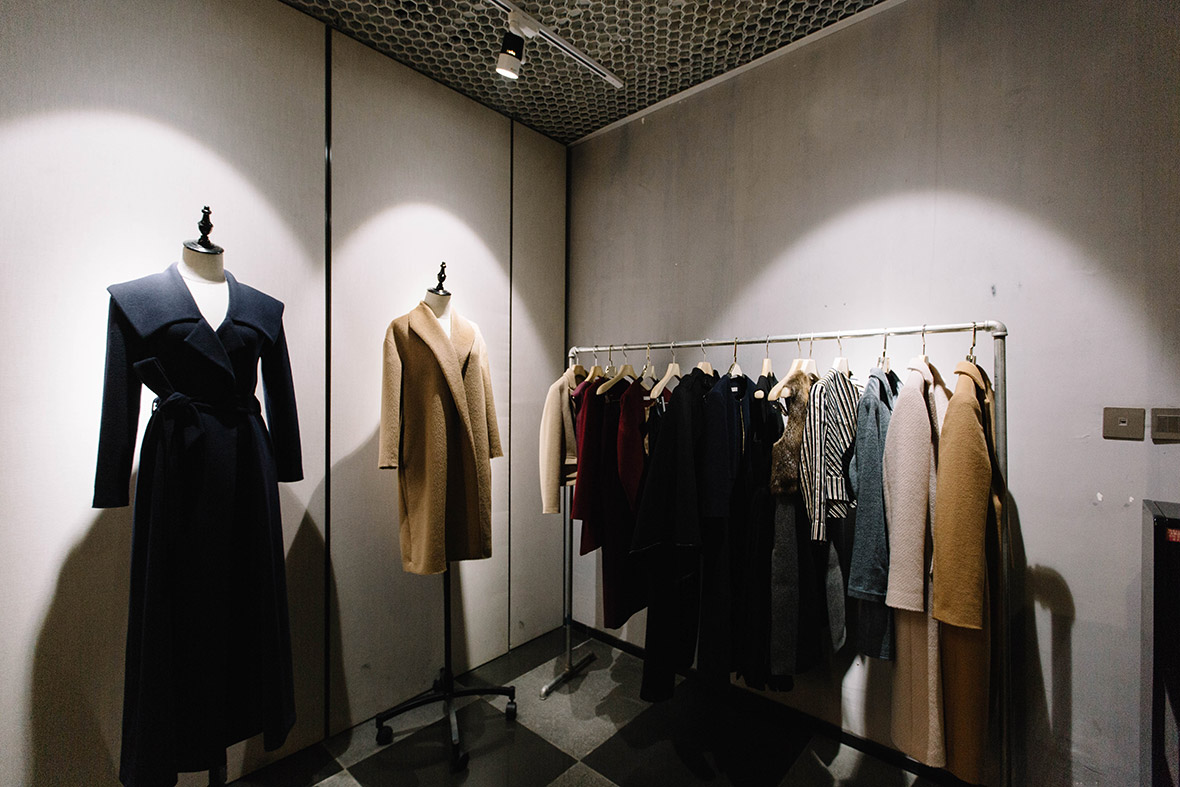
Neocha: Is there a reason why you place such heavy emphasis on Chinese culture when it comes to your fashion designs?
Chen Xing: Successful brands that have a deep respect for their local culture, have the mindset of wanting traditions to live on and be preserved. I’m Chinese – when I established my brand, my respect and desire to interweave local culture into my brand was a given. It’s not a publicity stunt. You have to start with the things that you understand and believe in the most, and have strong feelings towards. These things need to act as the foundation: the soil that provides the nutrients for your brand so to speak – that’s the role of your own culture. A brand, simply put, is just an abstract form of an individual’s personality. If you don’t understand your own culture, then you won’t be confident; and if you’re lacking that confidence, it makes it extremely difficult to shape your brand.
Neocha: 你为什么在服装中特别注重中国文化?
陈兴: 纵观所有好的品牌,他们都有着对自己本土文化和传统的尊重和延续。我是中国人,我做一个品牌,这方面应该是默认的,而不应该作为宣传噱头。你本就要从你最能理解、最有感受、最信仰的一个基础土壤去吸取营养的,那就是你自己的文化。品牌是个抽象化的人格。如果对自己的文化不了解,就会不自信;缺乏自信,你就很难去塑造你的品牌。
Neocha: What has been the biggest challenge for you in combining Eastern culture with contemporary fashion?
Chen Xing: The production chain. I wanted to do a series on oriental fans at one point, and some of these traditional fans are made with paper, some with canvas. There are fixed fans and folding fans; there are some that are embroidered, and others that use tapestry methods of silk weaving. Some fans are decorated with calligraphy, others with painted designs. Each fan involves a lot of creativity and all have a story behind it. I had to compromise when it came to production. There was only one place in Beijing that could make folding fans, but their work wasn’t consistent unlike the kinds that are produced through machines. I wanted to make embroidered fans, but there are not many tailors that could do it. When I did find someone who could do it, the end result was actually very unpolished. Making any additional requests increased costs too much. When I found myself wanting to create more intricate and high quality products, and wanting to fulfill my original design goals, that’s when I discovered the lack of support at different stages in the production chain. The slow deterioration of traditional crafts, the lust of money, and the lack of well-developed brands – I suspect these are the main reasons behind it all. I hope that I will eventually be able to change things.
Neocha: 东方文化和现代服装设计相结合,这其中的最大挑战是什么?
陈兴: 配套产业链。我曾想做一个扇子系列。传统扇子有纸面,有布面;有团扇,有折扇;有刺绣,有缂丝;有书法,有图案。它们有着各种故事,也有着各种创意空间。但在具体实现过程中,我不得不妥协:想做压褶,全北京只有一个地方能做,就这样,它压褶的效果也比不上大工业机器稳定;想做刺绣,刺绣工人本来就少,且做的也粗糙,多提一点要求就会导致成本过高。当你想做高品质的精致作品时,当你发现你需要更多的设计表现语言时,就会发现配套的周边产业链的问题。传统工艺的流失、想赚快钱的欲望、成熟品牌的缺位,都是这个现象的成因,我希望我可以改变这种情况。
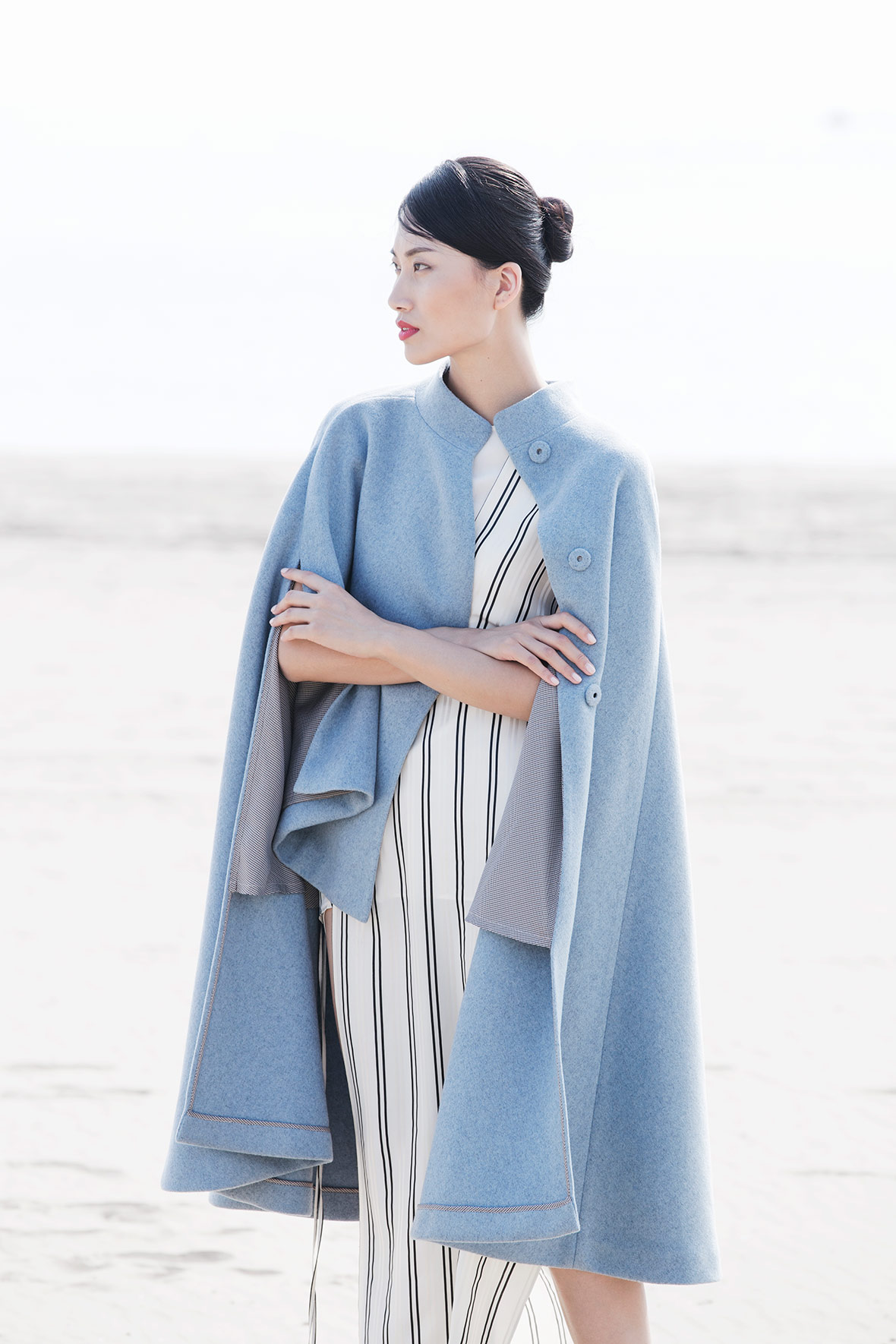
Neocha: What are your plans for the future? Any new projects?
Chen Xing: I have a project that combines aviation concepts with Chinese qipaos. Kites, gliders, vintage aircrafts, and modern airplane are all inspirations. I want to unite all of these things with traditional apparel that already possess their own unique defining characteristics. When qipaos were more commonplace, those that would wear it found it difficult to walk because of its constricted form. I want to take the classic elegance of qipaos and clash it against a modern, super fast thing like an airplane. I plan on being more experimental with the form and fabric. As for the long run, I hope that BI FU can develop into a China-based luxury brand.
Neocha: 未来有什么创作计划?
陈兴: 我想将旗袍和飞行元素结合在一起。风筝、滑翔机、复古飞机、现代飞机等,都有很多的想象空间,包括相应的服装也有显著特点。传统的旗袍,人穿着的时候路都走不开。我想将这样一种优雅古典的东西和一个具有速度感、现代感的东西发生碰撞,在形式和面料上也做新的尝试。长远来说,我希望能够做成可以代表中国的一个奢侈品牌。
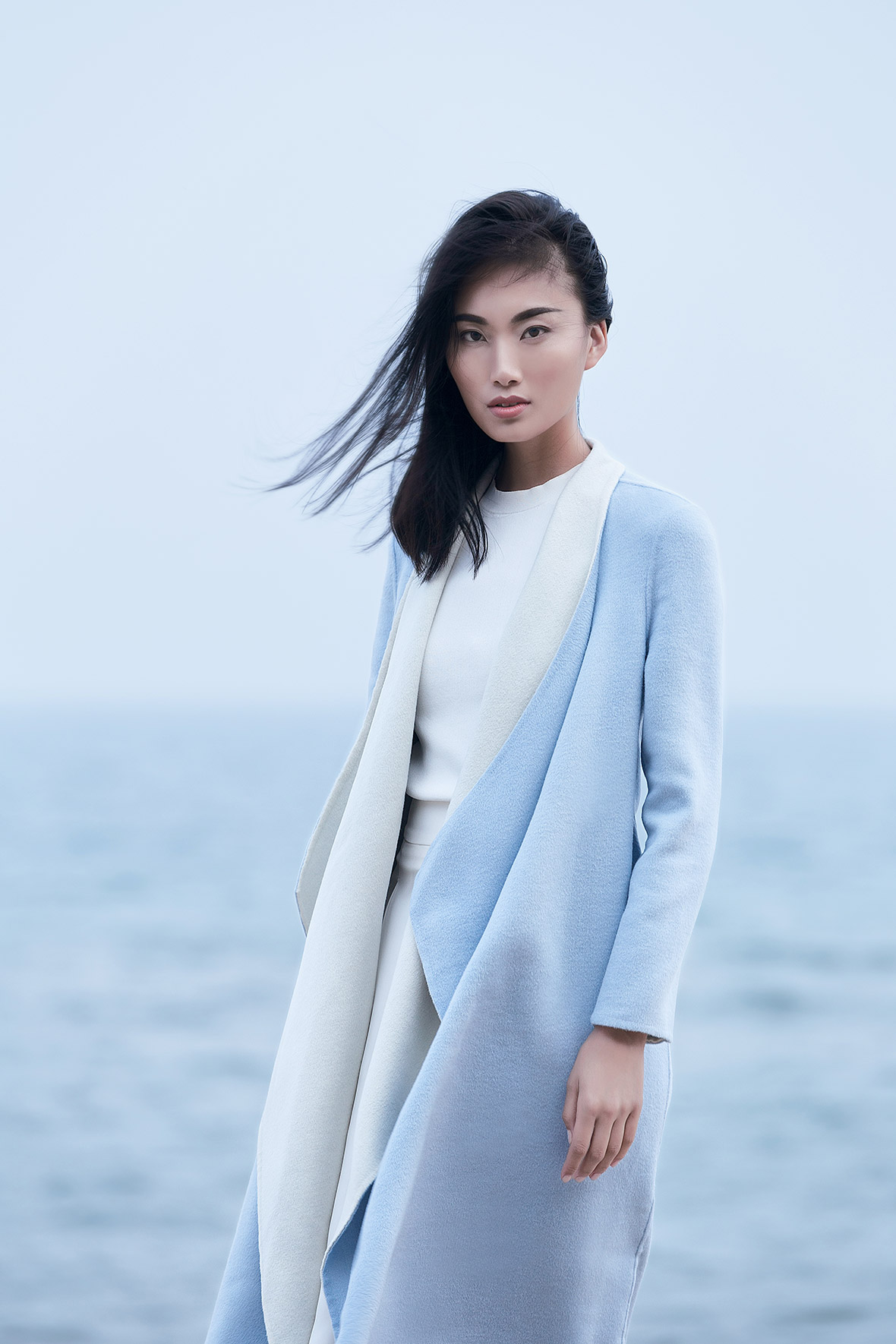
Contributors: Banny Wang, Eric Zhang
Photographer: Banny Wang
Additional Images Courtesy of BIFU
供稿人: Banny Wang, Eric Zhang
摄影师: Banny Wang
附加图片由彼伏授权提供

